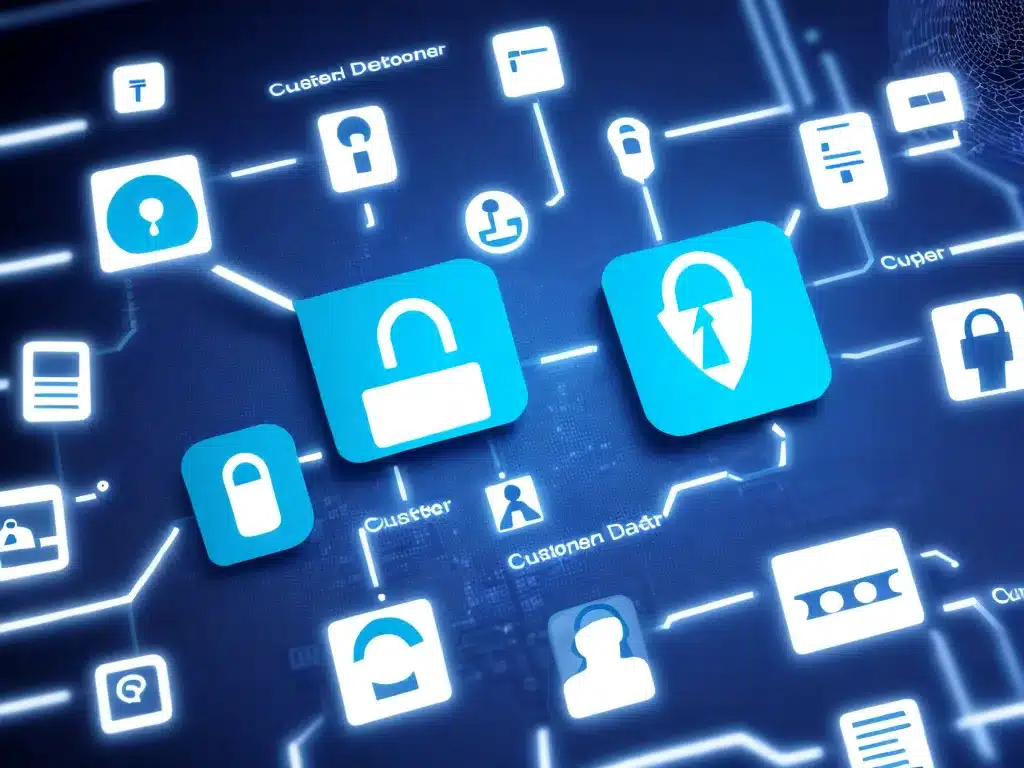Introduction
Protecting customer data is more important than ever in today’s digital age. As an individual or business, you have an ethical and often legal responsibility to safeguard any sensitive information your customers entrust you with. In the 2020s, cyber threats are growing more sophisticated, regulations are expanding, and customers have high expectations for privacy.
Fortunately, with forethought and vigilance, you can take proactive steps to build robust data security that evolves along with the risks. This article provides best practices and real-world examples to help you secure customer data now and in the years ahead.
Know the Laws and Regulations
The first step is understanding your legal obligations for customer data security and privacy. Relevant regulations include:
-
GDPR – The European Union’s General Data Protection Regulation imposes strict rules for collecting, processing, and securing EU citizens’ personal data. Fines for noncompliance are steep.
-
CCPA – The California Consumer Privacy Act gives California residents new rights over their data and requires businesses to be transparent about data practices.
-
HIPAA – The Health Insurance Portability and Accountability Act regulates protected health information. It applies to healthcare providers, insurers, and related businesses.
Stay current on these and other laws in the jurisdictions where you operate. Consult legal counsel when unsure to avoid regulatory enforcement actions.
Minimize Data Collection
Take a critical look at what customer information your business really needs. Collecting excessive data creates unnecessary security and compliance risks.
-
Only gather personal details like names, addresses, and ages required for your core services.
-
Anonymize data when possible by stripping out identifiers.
-
Have customers opt in to sharing non-essential information like preferences.
-
Purge old records per legal retention rules.
The less customer data you store, the lower your data breach exposure. Delete or anonymize anything not actively used.
Manage Access Carefully
Once collected, data must be protected behind authentication controls that make access available only to authorized personnel.
-
Implement role-based access so employees only see information relevant to their jobs.
-
Require strong passwords at least 12 characters long, changed every 90 days.
-
Turn on two-factor authentication (2FA) for an extra layer of login security.
-
Revoke access immediately when employees leave the company.
-
Monitor systems for unauthorized activity and lock accounts after failed login attempts.
With rigorous access management, you greatly reduce the threat of data compromises by malicious insiders or from compromised credentials.
Prioritize Encryption
Encryption encodes data so that only those with the decryption key can read it. Enable encryption to secure sensitive customer information:
-
Encrypt data in transit using TLS/SSL when transmitting over networks.
-
Encrypt data at rest using filesystem or database encryption for stored data.
-
Leverage tokenization to replace plaintext card numbers with tokens during transactions.
-
Mask data by displaying only partial info like last 4 digits of payment cards.
Proper encryption renders data unintelligible if unauthorized parties access it. Combine with access controls for defense in depth.
Architect With Security in Mind
When developing applications and services that handle customer information, engineer security measures in from the start.
-
Perform security reviews during design to find and address vulnerabilities early.
-
Separate and isolate systems so breach of one does not compromise all data.
-
Log activity to enable monitoring and forensic analysis if incidents occur.
-
Test defenses via controlled attacks to validate effectiveness.
-
Automate security through policy enforcement and configuration management tools.
“Security by design” reduces reliance on humans following security rules and catches oversights before launch.
Prepare for Incidents
Despite best efforts, data breaches and incidents can still occur. Be ready to respond quickly and effectively:
-
Have an incident response plan that designates roles, actions, and communications for containment and recovery.
-
Report breaches promptly as required by law and to help affected customers.
-
Offer mitigation services like fraud monitoring and identity protection to assist impacted individuals.
-
Conduct post-incident analysis to determine root causes and improve defenses.
With robust incident response capabilities, you can limit damages and regain customer trust through transparency and making things right.
Stay Current on Evolving Threats
Cyber threats and data security practices change constantly. Make ongoing improvements by:
-
Following industry best practices and guidance from standards bodies.
-
Training personnel regularly on security protocols and high-risk behaviors to avoid.
-
Monitoring threat intelligence and adapting defenses as new attack methods emerge.
-
Performing security audits and risk assessments to find and address gaps.
-
Keeping software patched and updated to close vulnerabilities.
Vigilance and continuous adaptation to the ever-evolving risk landscape are essential to keeping customer data secure.
Conclusion
Safeguarding customer information is both a legal duty and critical for trust and competitive differentiation. By minimizing data collection, prioritizing encryption, managing access tightly, engineering security into systems, being incident-ready, and staying current, you can build robust, effective data protections that serve customers well into the 2020s. With focus and commitment, you can become an industry leader in data security.












